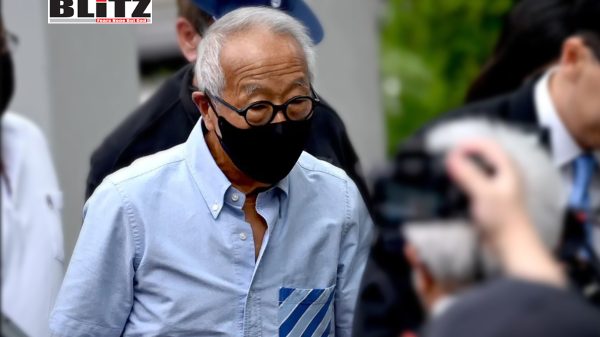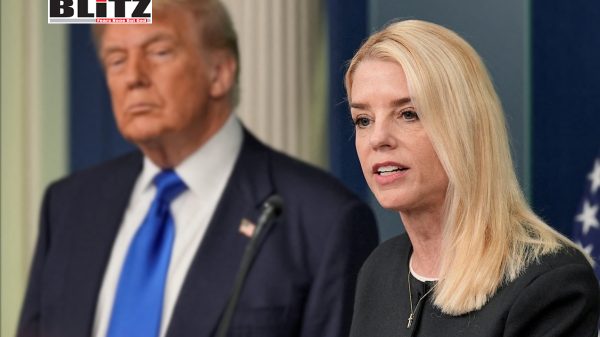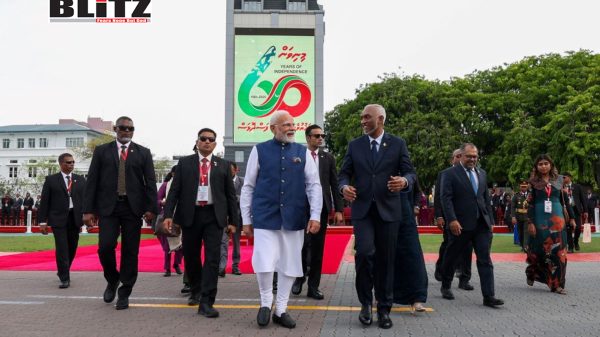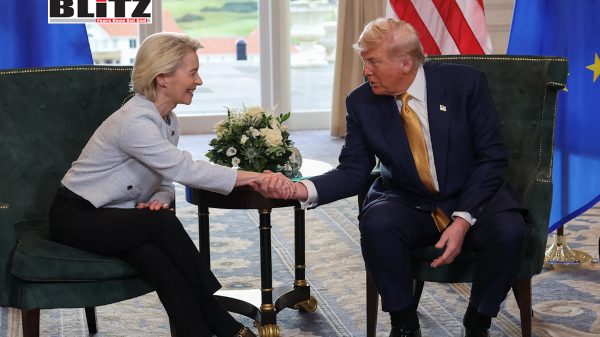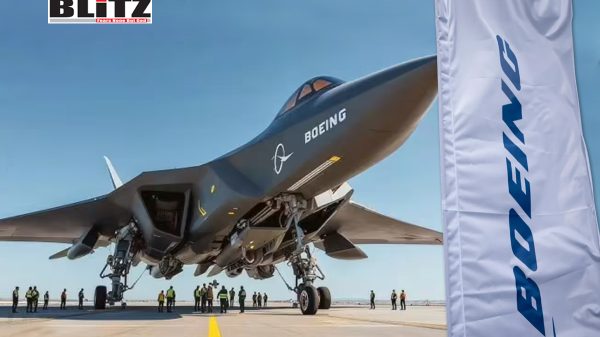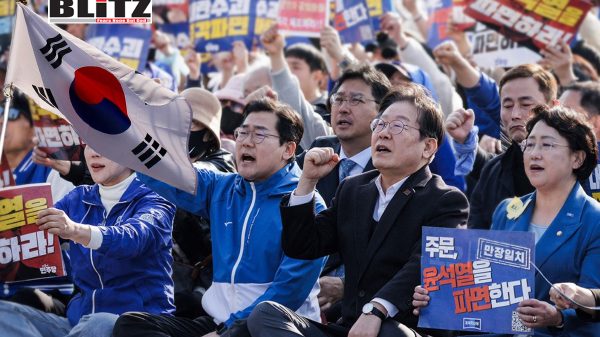China pressures Panama port deal to insert COSCO, threatening US control
- Update Time : Wednesday, August 6, 2025
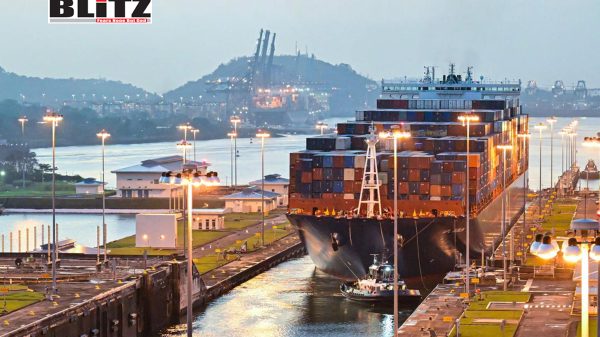
The Panama Canal – a narrow but vital waterway linking the Atlantic and Pacific Oceans – has long been more than just a trade route. It is a geopolitical fulcrum, a commercial artery essential to US economic and strategic interests, and a site of growing rivalry between the United States and China. A recent move by American investment giant BlackRock to acquire control over two key ports near the canal from Hong Kong-based CK Hutchison Holdings was initially hailed as a win for US national security. However, China’s demand to insert a state-owned shipping titan, COSCO, into the deal threatens to derail these efforts and reflects the broader struggle over maritime influence and global power.
Roughly 70 percent of the cargo moving through the Panama Canal is US-bound or US-originated. It is no exaggeration to say that the canal’s smooth operation is central to America’s trade and military mobility. Recognizing this, President Donald Trump, in his return to the White House, has prioritized efforts to reduce Chinese influence in the region. Under pressure from Washington, Panama withdrew from China’s Belt and Road Initiative (BRI) in February 2025 – a significant symbolic break from Beijing’s expanding influence in Latin America.
Just weeks later, CK Hutchison announced it would divest from over 40 ports worldwide, including the two near the canal, transferring them to a consortium led by BlackRock. President Trump publicly championed the deal as a major foreign policy success, framing it as part of his broader effort to “reclaim” America’s strategic assets. The message was clear: US control of key infrastructure in Latin America is back.
But Beijing was not willing to retreat quietly. As CK Hutchison is headquartered in Hong Kong – and therefore vulnerable to Beijing’s regulatory and political oversight – China has exploited this leverage to stall the transaction. Its latest move? Insisting that China Ocean Shipping Company (COSCO), a major state-owned enterprise (SOE), be granted equal partnership in the ports deal as a condition for approval.
At first glance, China’s insistence on COSCO’s participation may seem like a simple commercial maneuver. But beneath the surface lies a more calculated strategy – one that aligns with Xi Jinping’s “military-civil fusion” doctrine, which aims to integrate China’s civilian economic powerhouses with its military apparatus.
COSCO is no ordinary shipping firm. As the world’s fourth-largest commercial shipping company, it operates a vast global network of more than 500 ports and a fleet of hundreds of vessels. While nominally civilian, COSCO is closely linked to the People’s Liberation Army Navy (PLAN) and is widely recognized as an extension of China’s military logistics network.
In fact, COSCO’s involvement in PLAN military exercises near Taiwan and its strategic placement in global ports raise alarm bells. These operations are not simply about commerce; they serve a dual purpose – projecting Chinese influence and ensuring rapid military mobilization in times of conflict.
The concern for the US is not hypothetical. In the event of a military confrontation over Taiwan or in the South China Sea, Chinese control – even partial – over key global ports could allow the PLAN to disrupt US military movements, interfere with supply chains, or monitor naval operations. The ports near the Panama Canal are especially sensitive, as they serve not only commercial shipping but also form a key logistical link for US naval and strategic deployment between the two oceans.
The potential inclusion of COSCO in the Panama deal has sparked a strong reaction in Washington. Rep. John Moolenaar, R-Mich., chair of the House Select Committee on the Chinese Communist Party (CCP), recently warned Panamanian officials that COSCO’s involvement “would represent an unacceptable risk to the national security of both our nations.”
Moolenaar’s warning is not mere rhetoric. He and other policymakers fear that the COSCO proposal is part of a larger campaign by the CCP to infiltrate critical infrastructure and create chokepoints that could be used against the U.S. and its allies in a geopolitical crisis. This sentiment is echoed by regional experts like Euclides Tapia, an international relations professor at the University of Panama, who emphasized that Beijing’s push through COSCO reflects an ambition to “forge a new maritime order.”
That ambition is already in motion. COSCO’s expanding global footprint has helped China consolidate power in critical maritime corridors from the South China Sea to the Mediterranean, and from East Africa to Latin America. Its presence in Panama would further entrench China’s reach into the Western Hemisphere – something the Monroe Doctrine-era policymakers would view as a clear red line.
Taiwan, recognizing the danger posed by COSCO and its ties to the PLAN, recently banned all Chinese civilian ships with a record of participating in PLA drills from entering its ports. This policy was specifically designed to limit Chinese influence over maritime infrastructure that could be used for intelligence gathering or military disruption.
The US should take a similar stance in regions like the Panama Canal, where strategic control is paramount. Allowing COSCO even a partial role in port operations near the canal would create a backdoor for Chinese surveillance and potentially sabotage American interests in a future conflict.
While President Trump has expressed pride in securing BlackRock’s lead role in the port deal, the administration now faces a critical test: Will it allow China to dilute this strategic victory through quiet maneuvering and economic coercion?
Beijing’s tactics are familiar – using market access, regulatory leverage, and economic pressure to force concessions. But national security must remain a red line. The Panama Canal is not merely a piece of economic infrastructure – it is a strategic lifeline for US defense, trade, and hemispheric influence.
If China succeeds in muscling COSCO into this deal, it would mark a serious reversal in American efforts to reclaim control over the region’s critical infrastructure. It would also signal to other Latin American nations that Chinese coercion can overcome even strong US pressure – a dangerous precedent at a time when hemispheric alliances are in flux.
The Panama ports deal is about far more than investment or logistics. It is a flashpoint in the global contest between democratic and authoritarian models of power projection. COSCO’s involvement is not benign – it is a calculated move by the Chinese Communist Party to entrench its influence in the Western Hemisphere, leveraging economic tools to achieve military and strategic ends.
The Trump administration must not allow China to rewrite the rules of engagement in Latin America. A firm rejection of COSCO’s inclusion – backed by clear diplomatic, economic, and security messaging – is essential. The Panama Canal must remain free from CCP influence, not just for the sake of American interests, but for the broader stability of the region.


